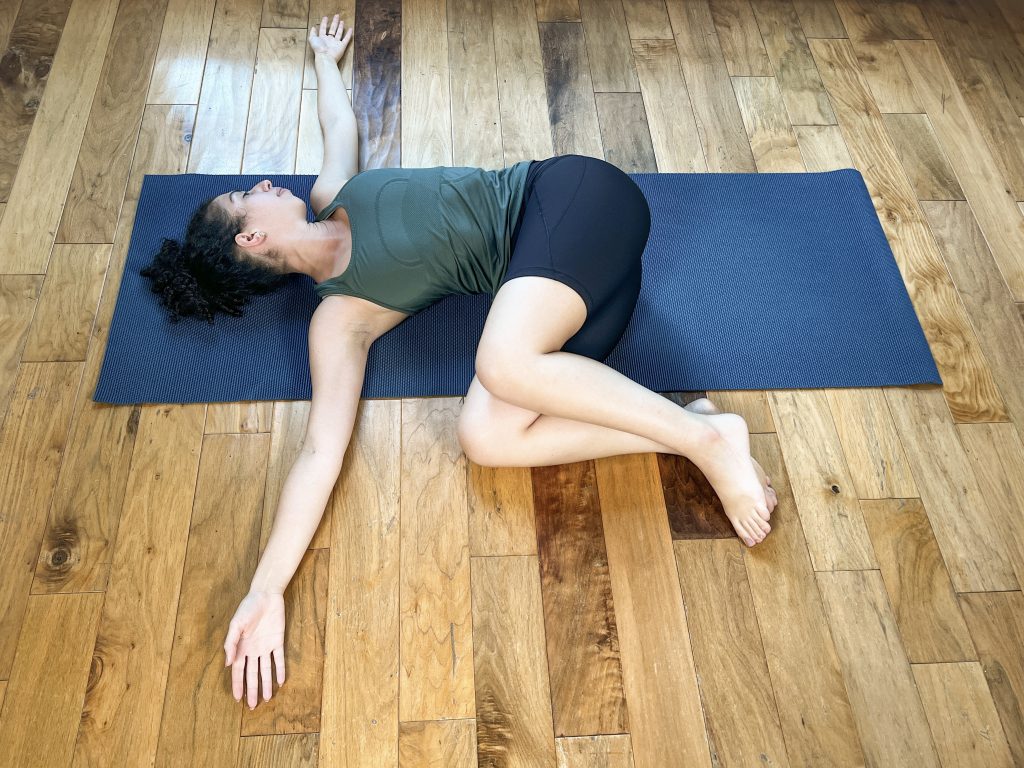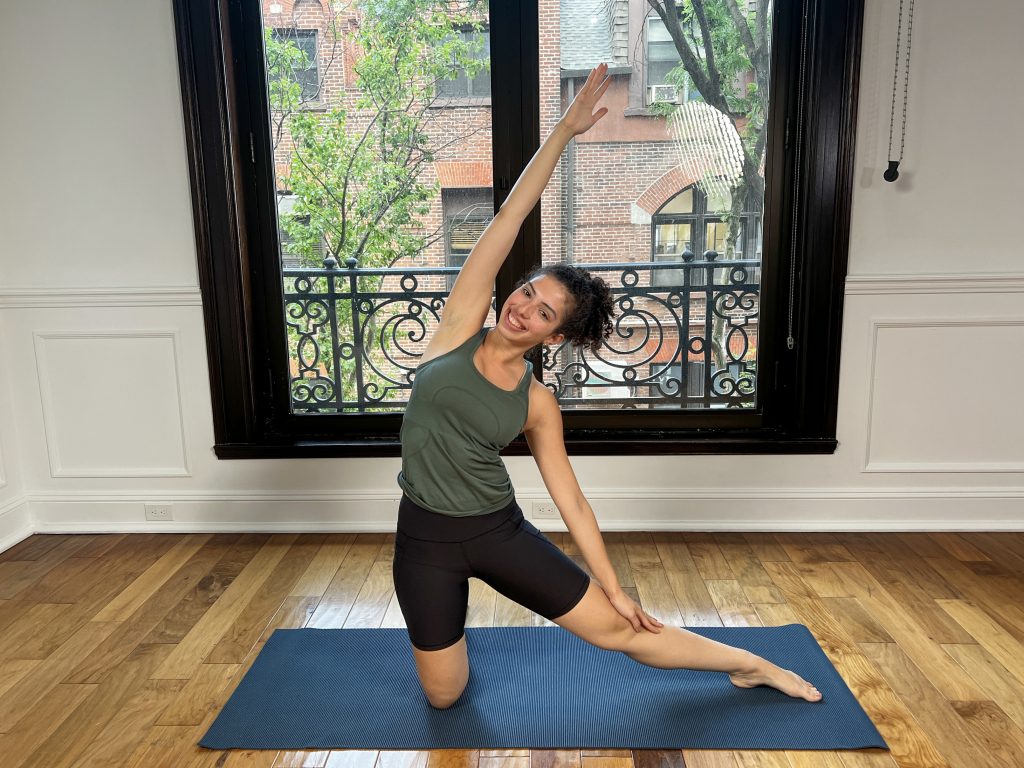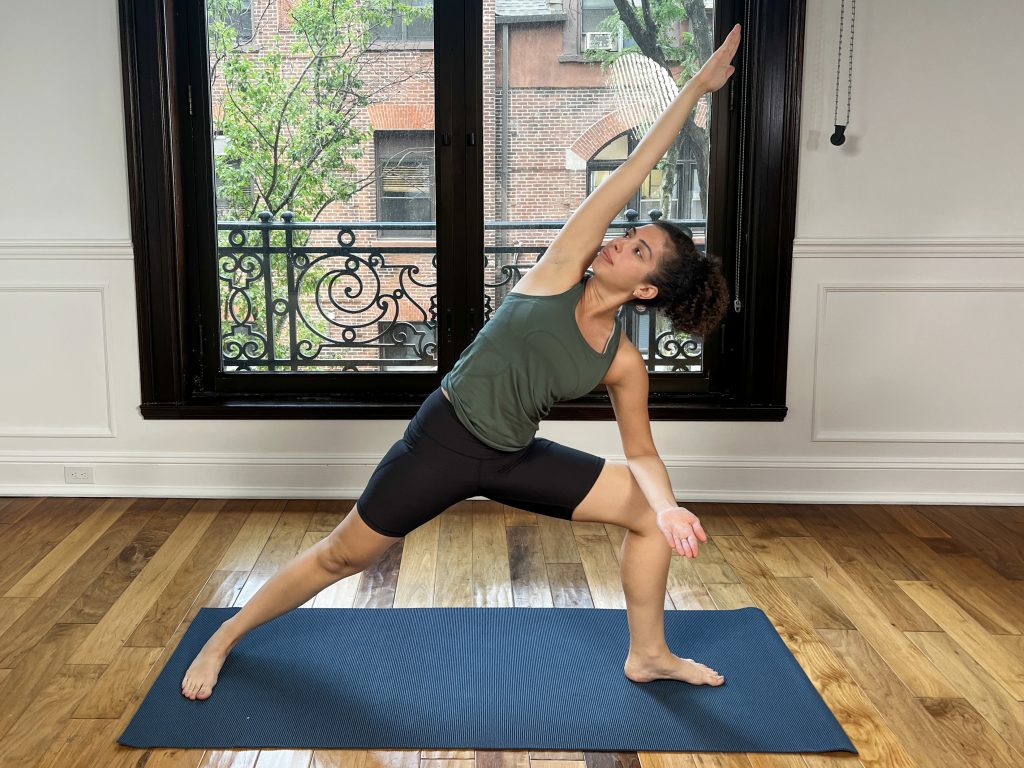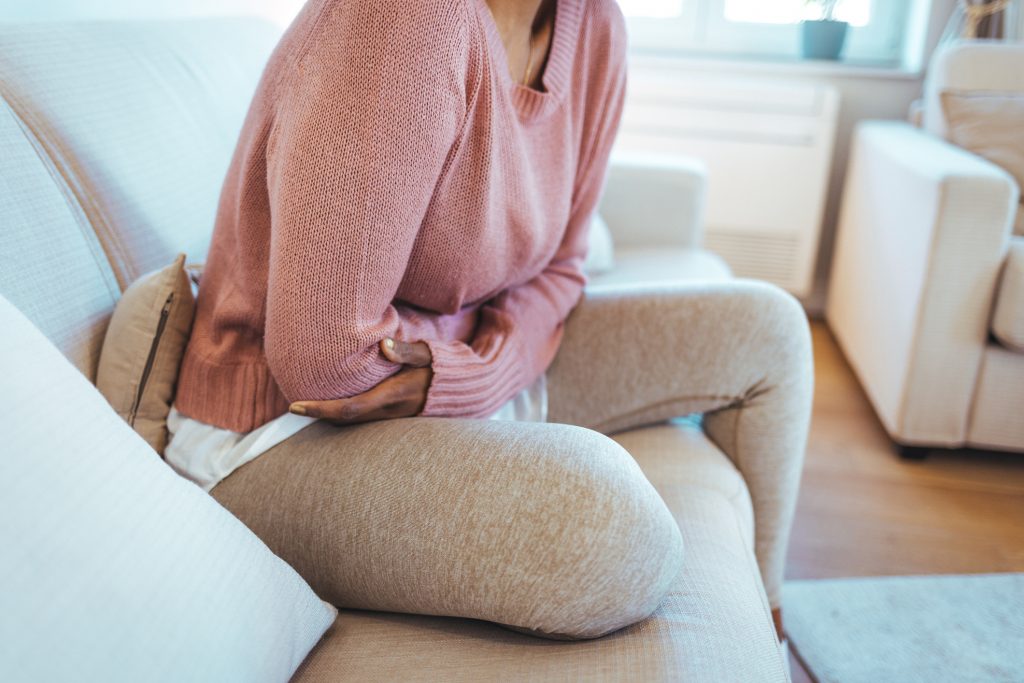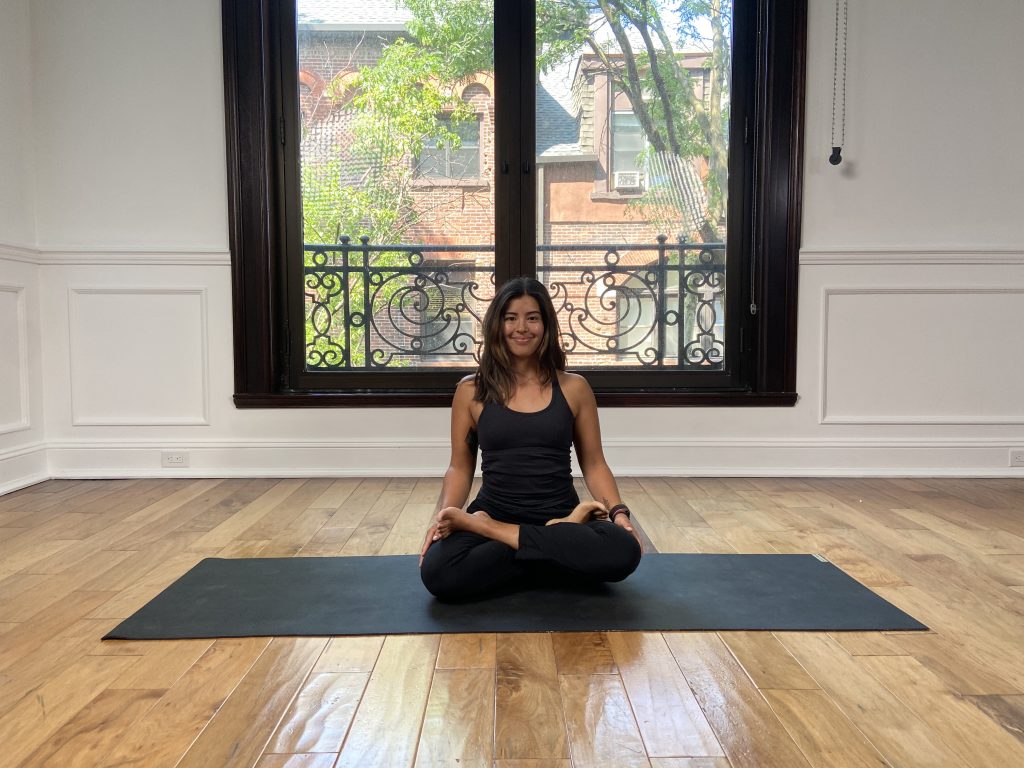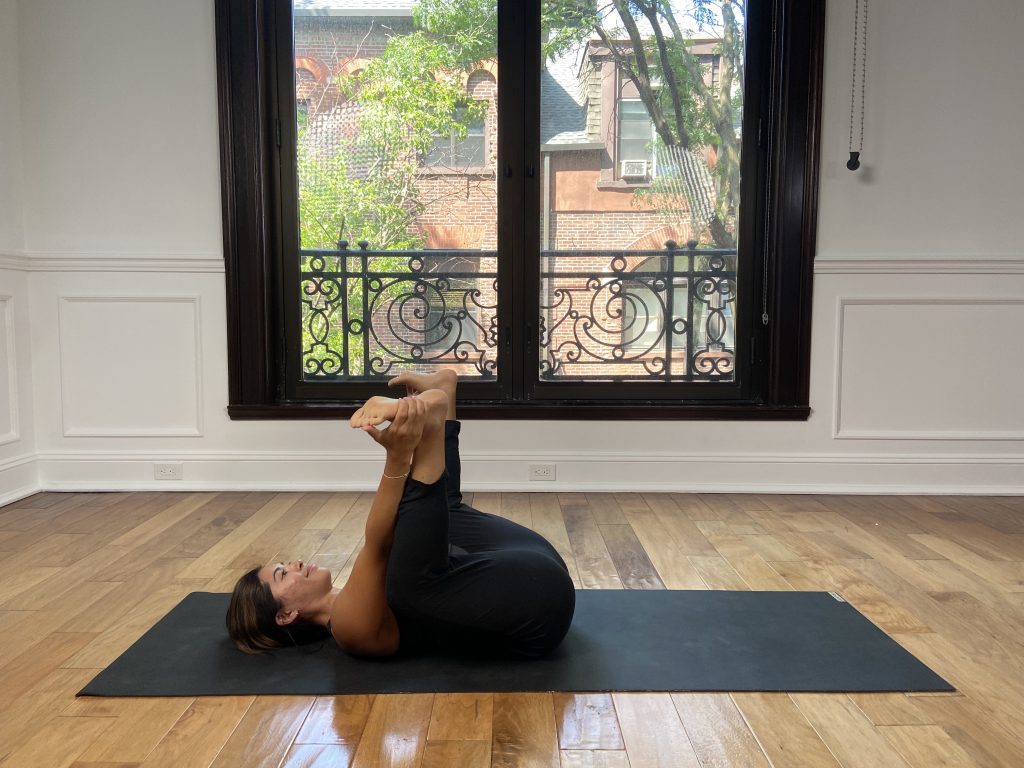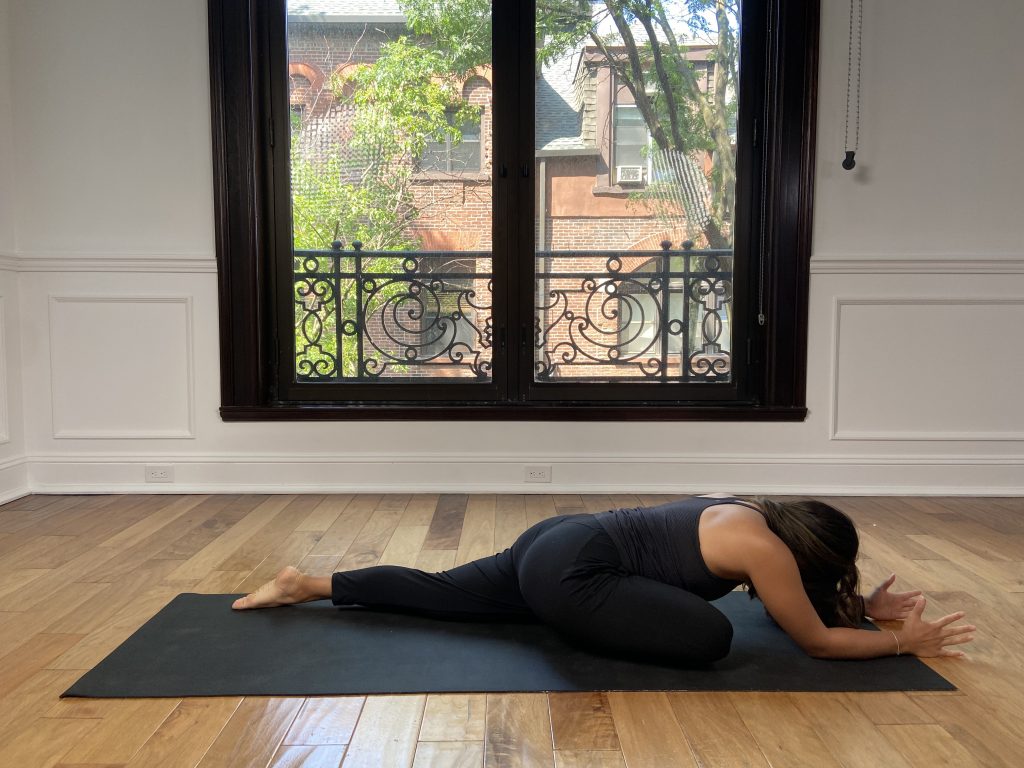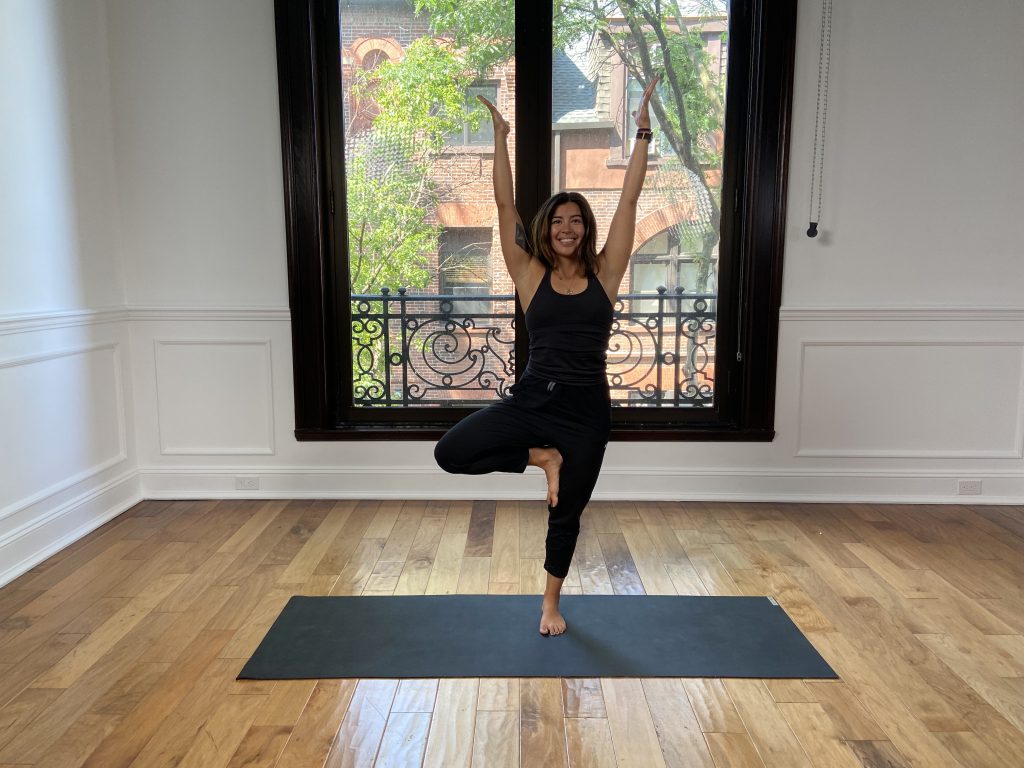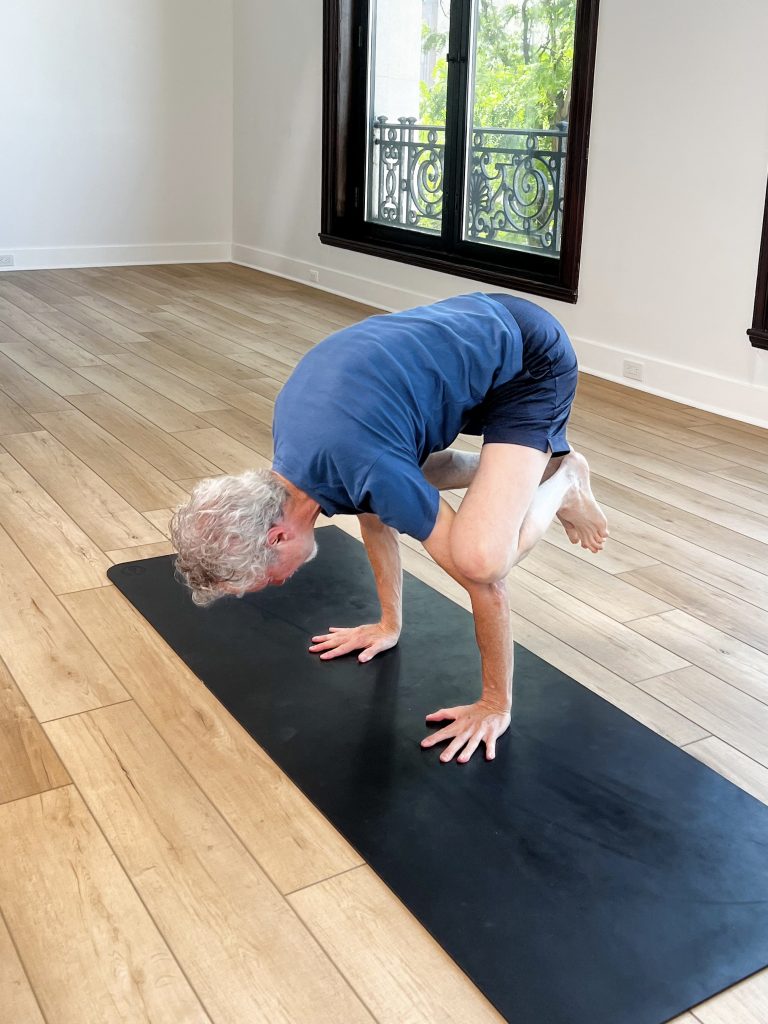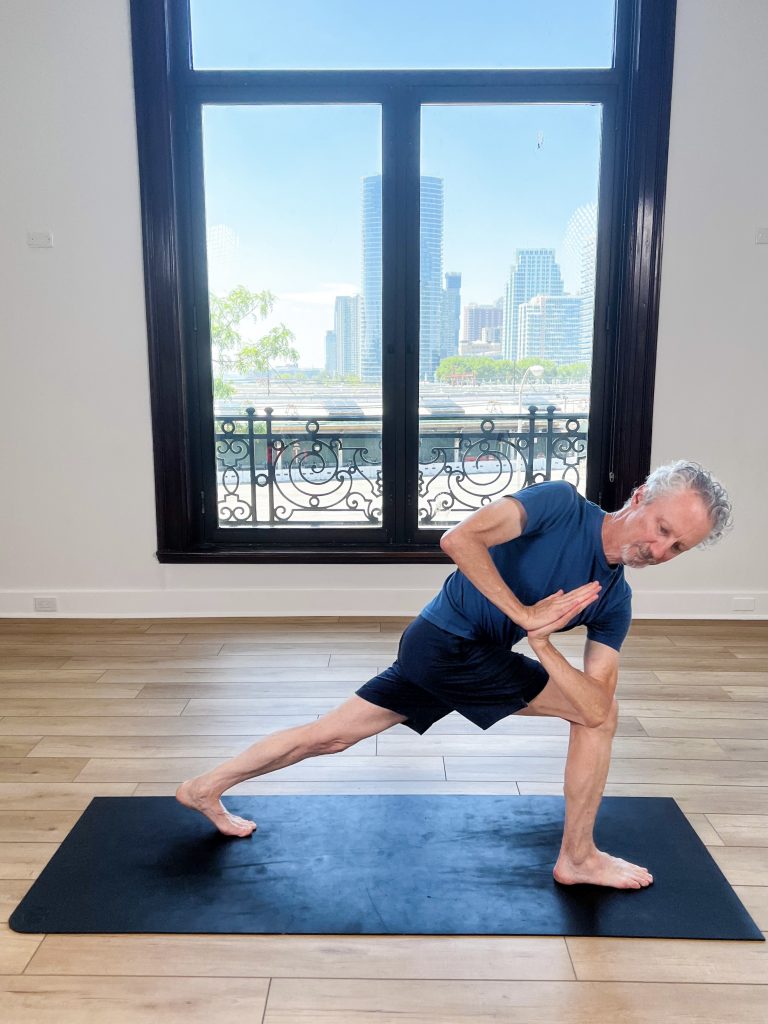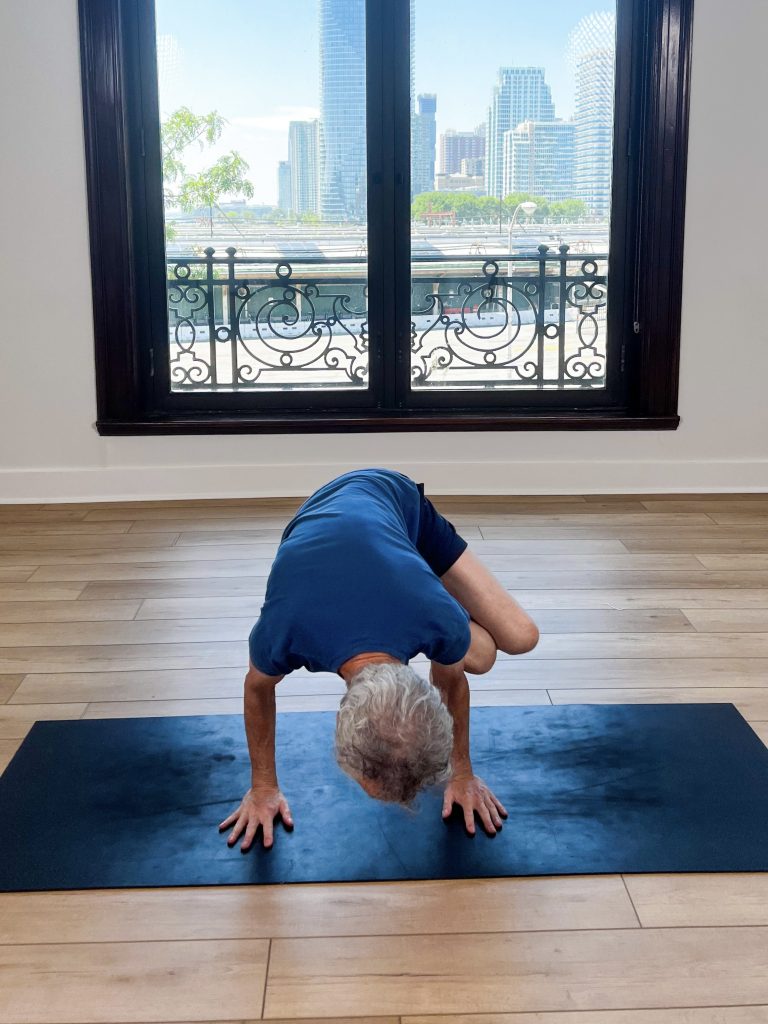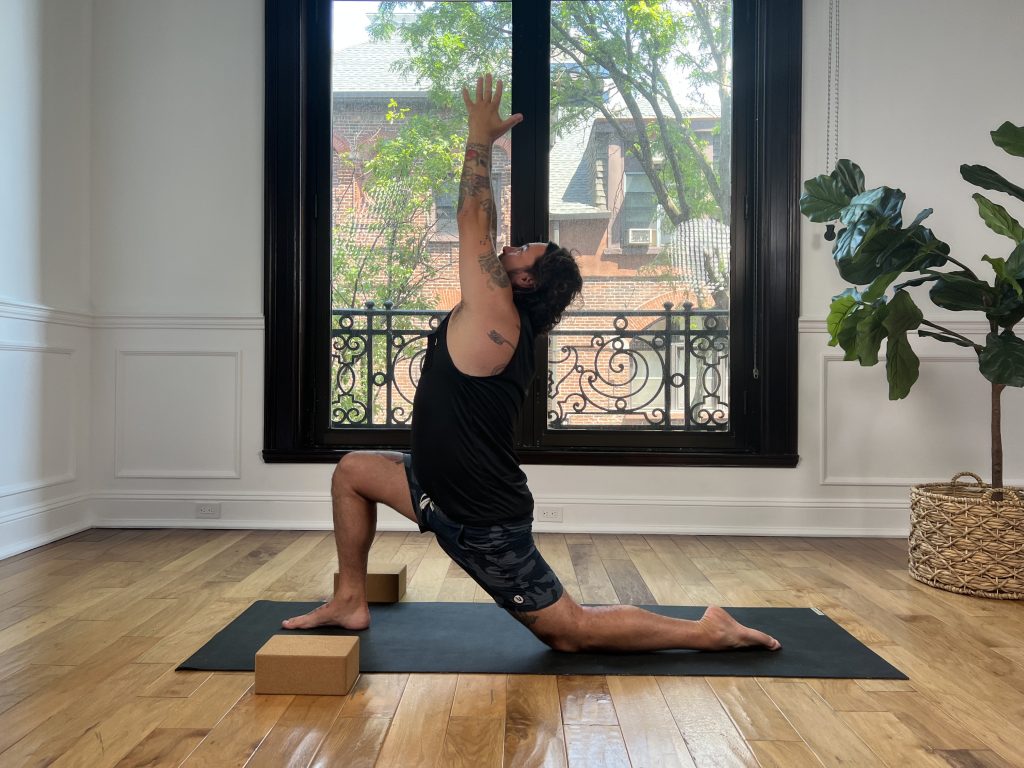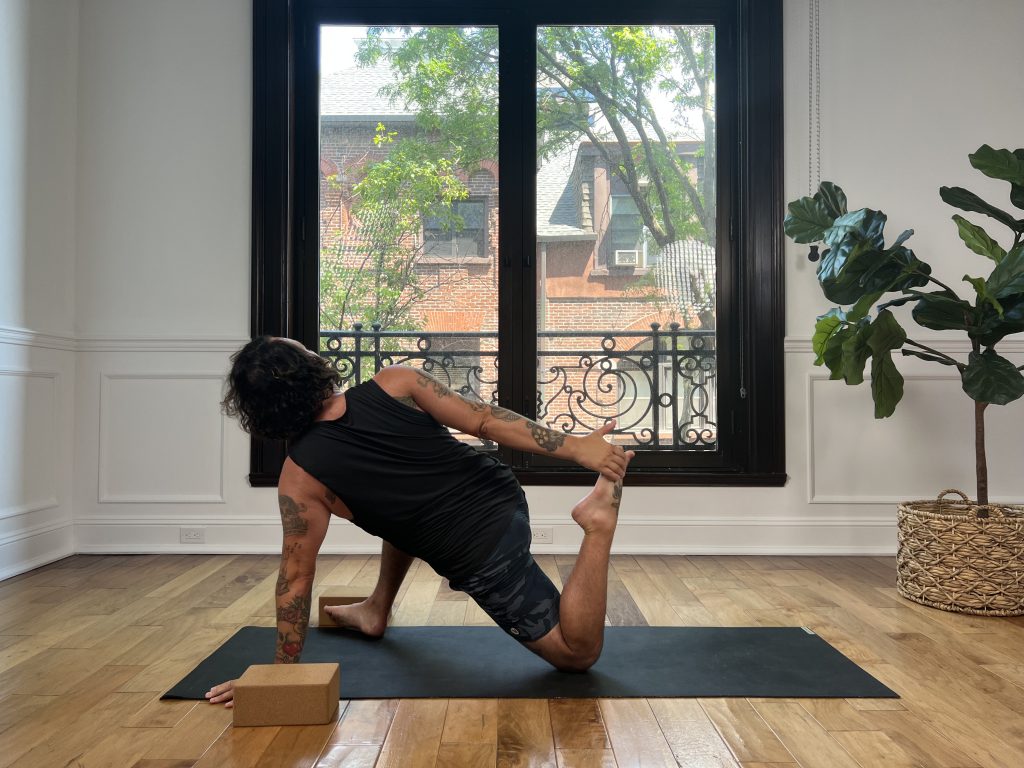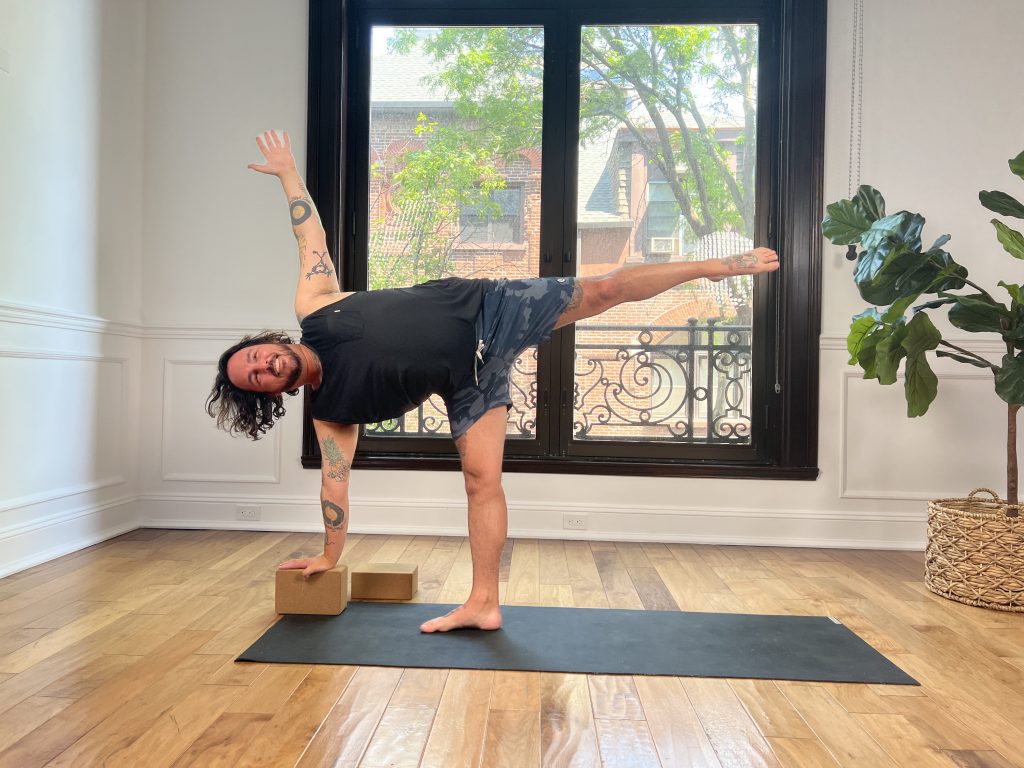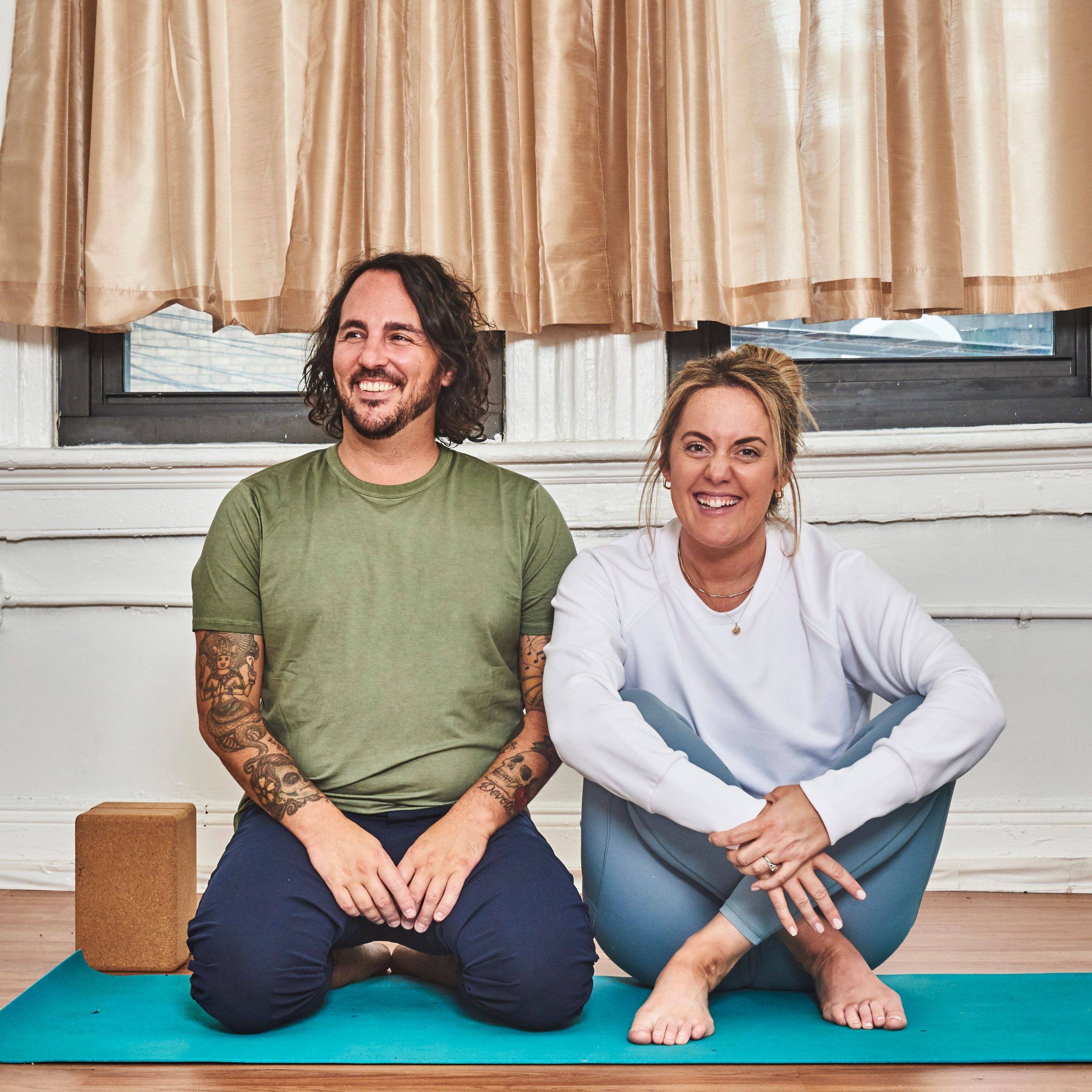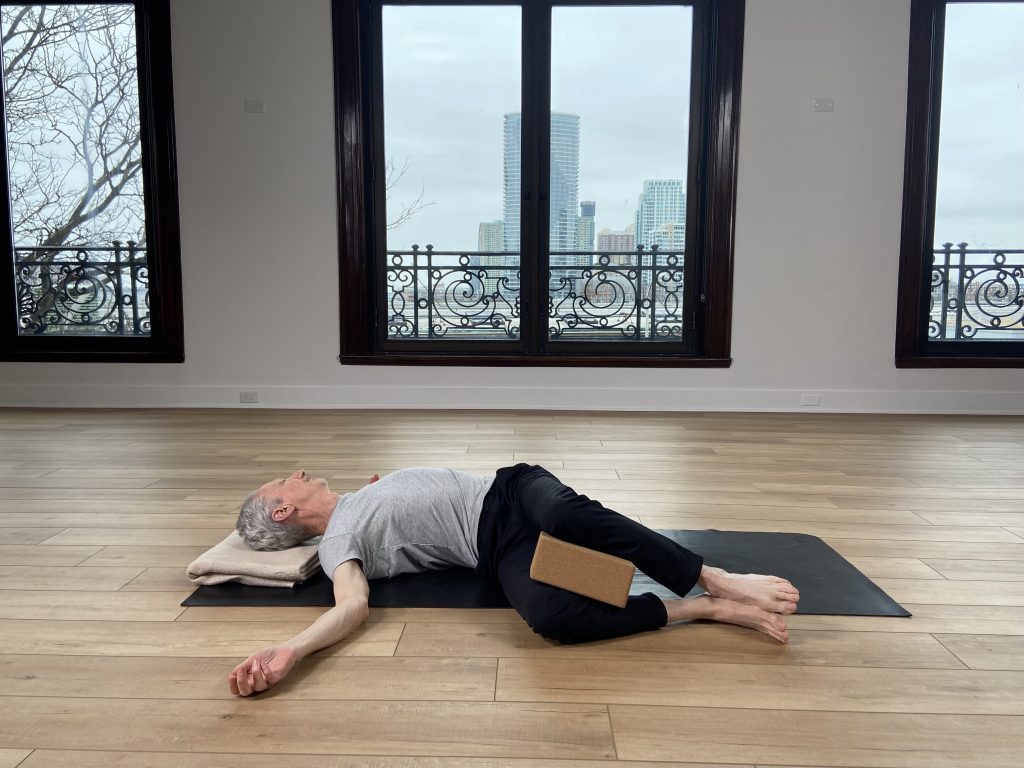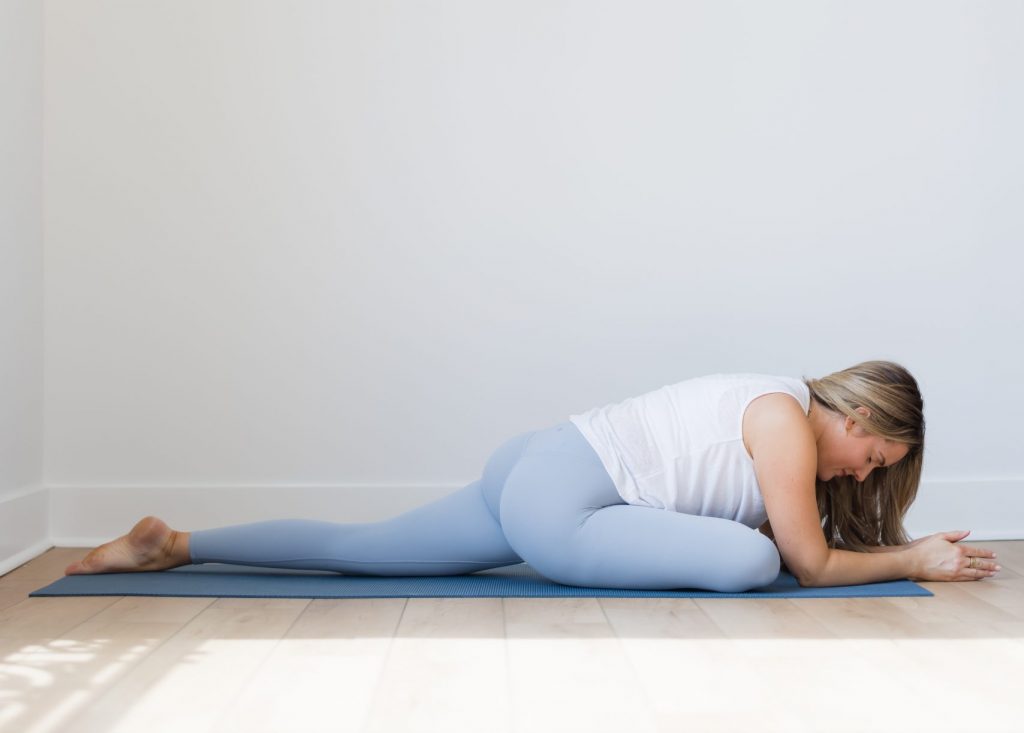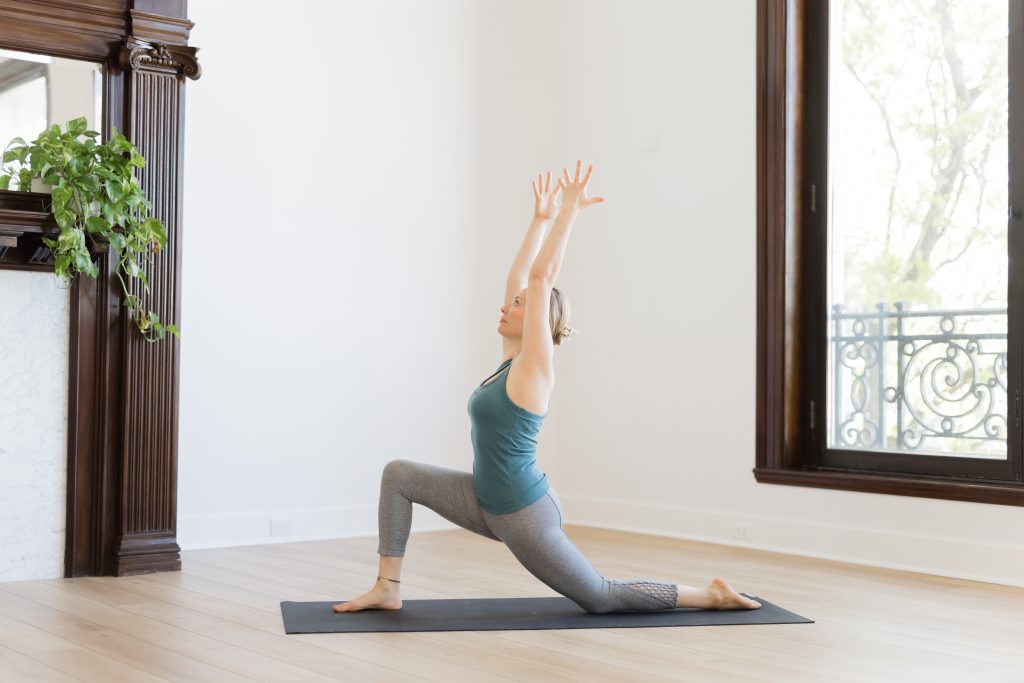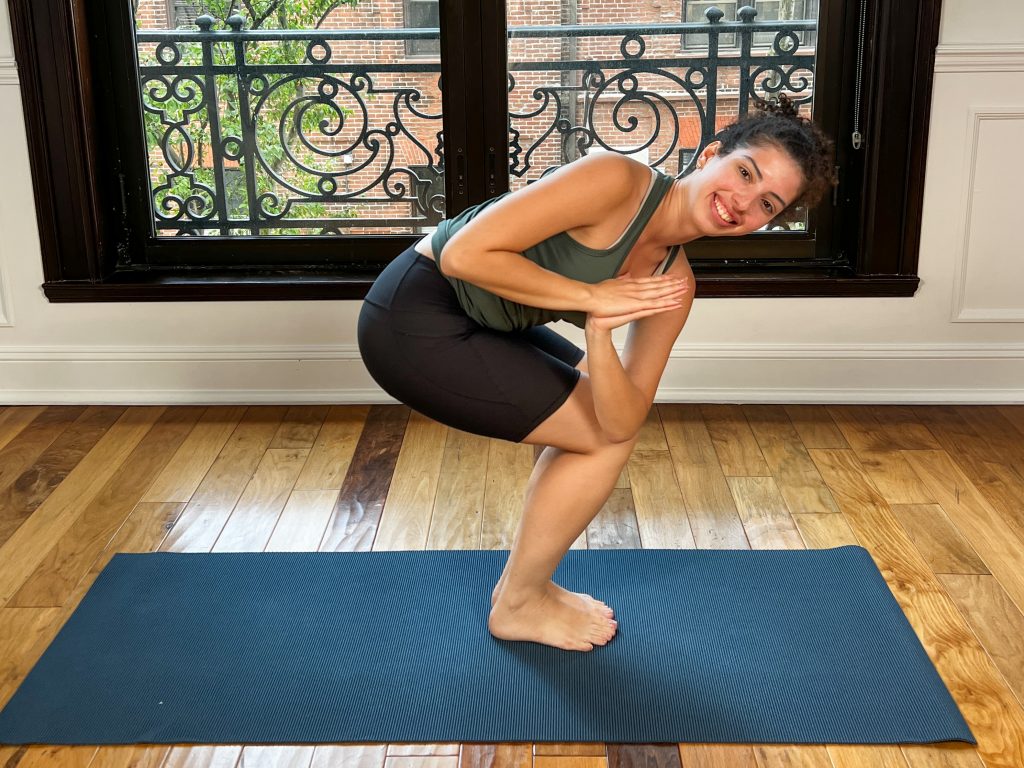
In this week’s class, we’re balancing our pitta dosha! Yoga is known as the sister science of Ayurveda, which teaches us that the doshas are the three main components of a person’s makeup, related to each of the elements. Pitta dosha is comprised of the elements fire and water. Many yoga postures are beneficial to balancing all of the dosha types, but this week we will focus on solely pitta.
When our pitta dosha is out of balance we may find ourselves getting overheated, irritated, even excessively sweating, and other bodily reactions. Whereas a balanced pitta dosha can offer contentment, good digestion, and passion. While foods and other daily practices contribute to a balanced dosha, a focused yoga practice can assist as well.
“Ayurveda teaches us to cherish our innate-nature – to love and honor who we are, not as what people think or tell us, who we should be.” – Prana Gogia
Our peak pose this week will be revolved chair pose and we’ve also listed out other warmup poses to prepare you for revolved chair, or Parivrtta Utkatasana.
Supine Twists (Supta Matsyendrasana)
How to:
1. Begin by lying down on your back with your knees bent.
2. Bring your arms out wide and allow your shoulders to press into the mat.
3. Draw your knees into your chest and begin to let both knees slowly fall over to the left side. Let them fall comfortably towards the mat.
4. Allow your head to gaze in the opposite direction of your knees. If this is too much, keep your gaze looking up or look in the same direction as your knees.
5. With every exhale focus on deepening into the twist.
6. Hold for several breaths before switching sides.
Gate Pose (Parighasana)
How to:
1. Begin by sitting on your knees with your back straight.
2. Straighten your right leg and extend it out to the right side of your body keeping your knee and ankle in line with your hip.
3. Keep your right foot parallel to your mat with your toes pointed forward.
4. Inhale and lift your left arm up over your left ear, extending your arm over your head.
5. Begin to deepen your reach by leaning your torso to the right on your exhale.
6. Gaze up over your extended left arm.
7. Repeat these steps on the other side.
Extended Side Angle (Utthita Parsvakonasana)
How to:
1. Begin in Warrior II pose.
2. Bring your front forearm onto your front thigh.
3. Extend your opposite arm up toward the sky with your fingers pointing towards the front of your mat.
4. Allow the bicep of your top arm to frame your ear. If this is too much, you can keep the arm lifted straight up towards the sky.
5. Keep your chest rotated upward and root down through the outer edge of your back foot.
6. Lift your head up towards the top arm. If this is too much, keep your gaze towards the ground.
7. To advance the pose, bring your top arm and extend your fingers toward the outside of your front foot. To help with flexibility, you can place a block by your front foot and place your hand on it.
8. To come out of the pose, press into your front thigh and activate your core to lift you back up to Warrior II.
And Finally…Revolved Chair Pose (Parivrtta Utkatasana)
How to:
1. Begin in Chair pose with your hands in prayer at the center of your chest
2. Activate your core and begin to twist towards your left, hooking your right elbow outside of your left thigh.
3. Keep your shoulders stacked as you broaden through your collarbones.
4. If possible, bring your gaze up towards your upper elbow or keep your gaze down towards your mat.
5. Press firmly into the balls of your feet and squeeze your thighs together.
6. To release, engage your core and quads as you twist back to your center.
7. Switch sides.


